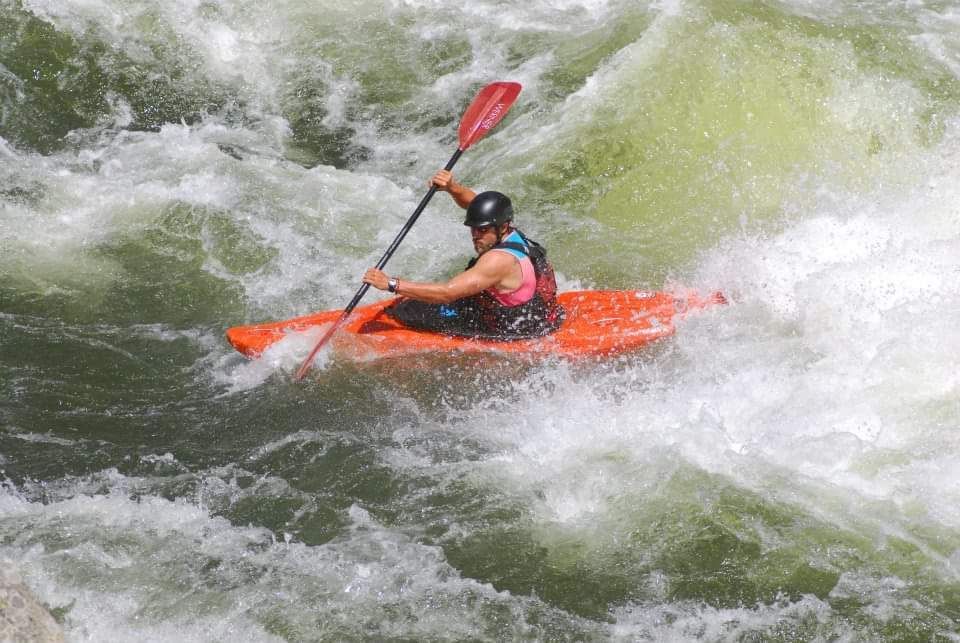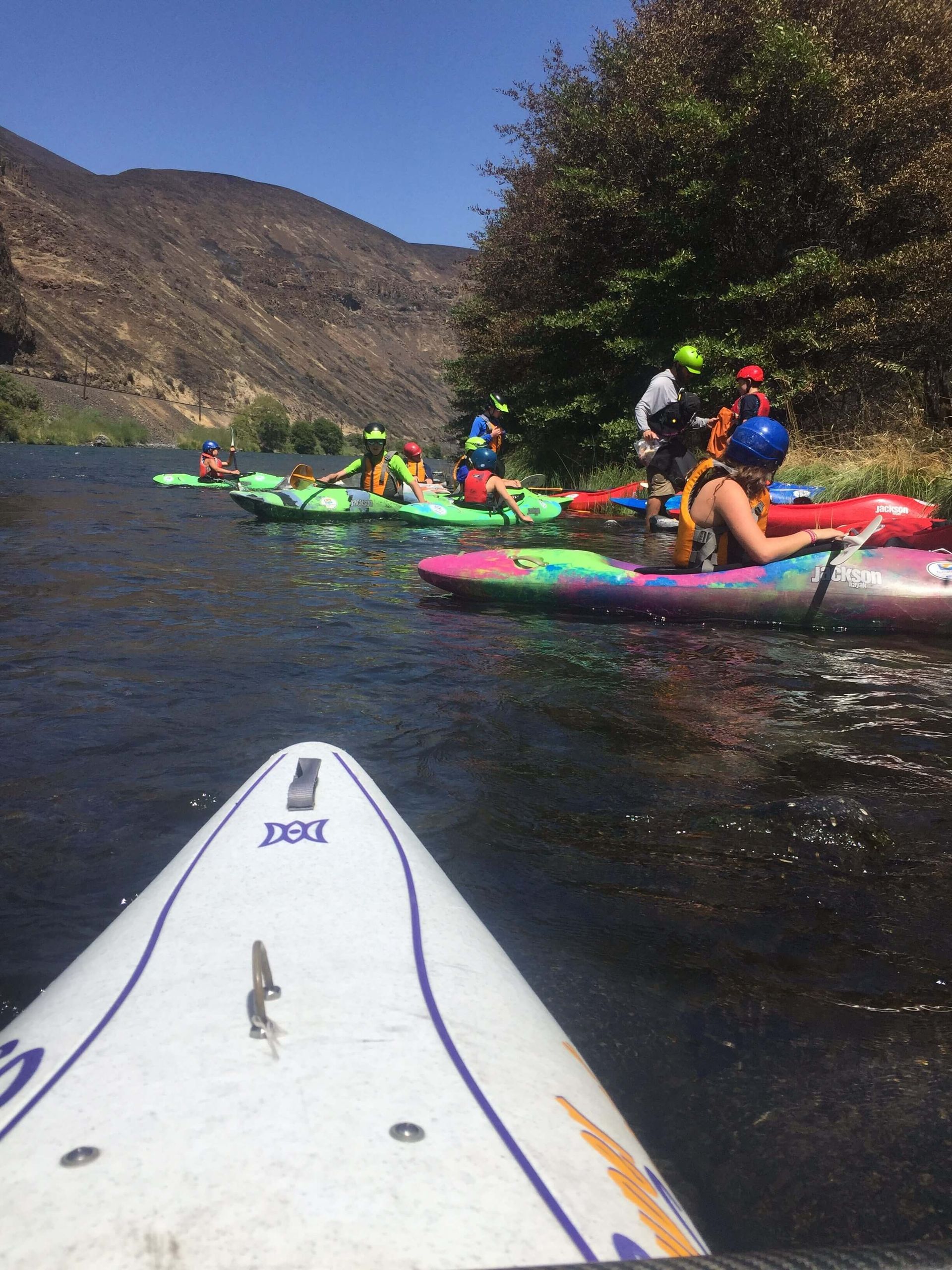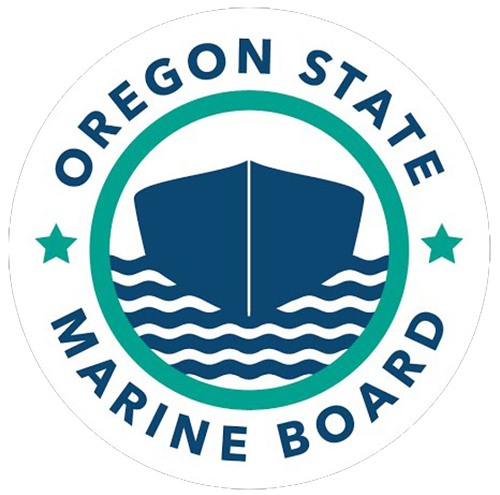Learning to Kayak on the Salmon River with Will Howerton
WWRE is bringing back an old favorite this summer! We will be offering a revamped kayak course July 16-20, 2019 in partnership with Central Oregon Whitewater Academy (COWA). The trip will take place on the lower portion of the Salmon River known as The Canyons. In just 5 days and 53 miles Will Howerton, owner and operator of COWA, and his crew will equip you with the skillset to confidently run class III-IV rapids.
Floating the Salmon River is more than a scenic experience—it's a true introduction to thrilling water navigation. Our program complements the journey, giving you a full Salmon River experience that balances safety, education, and adventure.
Will Howerton has over a decade of experience in running whitewater in both Idaho and Oregon. He got first got his feet wet on the banks of the Main Payette river outside of Boise, Idaho and was instantly hooked to the sport of kayaking. To learn more about Will, his past boating and guiding experience and what the WWRE course will offer, read on.
Meet the Instructor: A Q&A with Will Howerton
Where are you from?
Born and raised in Wendell, Idaho about an hour and a half east of Boise.
How long have you been kayaking?
I have spent about 12 years on the water. I started getting into whitewater with my uncle when I was 19. The first time I went out on an inflatable kayak and flipped in the rapids on the Main of the Payette like three or four times on the Main of the Payette. I thought it was the most fun thing I had ever done and I was instantly hooked. I went every weekend with him.
In 2011 there was a flood year and I saw all the crazy kayaking that was happening and wanted a piece of it. I started to take kayaking more seriously by going to roll classes and going down the Main of the Payette with some other beginners. From that year I went from not knowing how to kayak at all to running some straightforward class V rapids.
What inspired you to teach kayaking?
I worked for Cascade Raft and Kayak in Idaho and they put on a lot of kids camps. All the kids always looked like they were having so much fun. The instructors seemed to actually enjoy their work, 100 percent of the time. It seemed a lot less intense than guiding and a much more casual atmosphere.
More than anything I was inspired by my mentors. They truly wanted to see you become a confident kayaker and they wanted you to succeed. I wanted to teach others how to kayak and share with others how fast you can be a class III or IV kayaker. I wanted to show them how quickly they can progress with the right instruction and
beginner kayak lessons. It is common for most people to only kayak class III whitewater and never progress beyond that.
What makes the Salmon River an ideal location for the WWRE kayak course?
The Lower Salmon Ranger Station area offers shorter, bigger rapids that can be thrilling and forgiving, allowing for plenty of recovery time. This creates a platform advantageous to mastering beginner and intermediate skills, similar to white water kayaking courses held in theme park-like setups. The Salmon Whitewater Park is an excellent example of beginner-friendly features.
The Canyons section of the Idaho Salmon River is dynamic and forgiving. With middle fork of the Salmon features just a region away, this spot provides ideal water flow and technical variety for first-timers.
We also highlight Whitewater Raftings as part of our offerings, ensuring even those who want less intense paddling still enjoy the river's beauty.
Pool and drop rapids have advantages for beginners like being able to see a clear line down the rapid, allowing you to follow and mimic the instructors or other attendees before you join the fun.
Do you have to have strong upper body fitness to take this course?
Absolutely not. It is always beneficial to have more physical fitness but I would say stamina is more helpful than anything else.
What would you like for participants to know before showing up for the course?
This program is designed for very first time beginners to intermediate kayakers who may be wanting to work on their technique. There are no prerequisites for the class — just a desire to learn and have fun.
What do you hope participants leave with from this course?
I want them to be confident that they won’t need another kayak lesson for a long time. That is why it is designed to be a five-day course and not just two. It really makes a difference. After this five-day course, most won’t need another beginning kayaking lesson or additional white water kayaking courses for quite some time.
How do you help someone that has flipped their boat or in an emergency situation?
Before you think about
what to do when your boat flips, always remember that, the number one thing you get from a guided trip is safety. Our instructors abide by a 10 to 15-second rule — at least one guide will always be within a distance of 10 to 15 seconds from your boat at all times. We are trained in being able to pull you right side up in a variety of different conditions.
Before each rapid, we decide a line up of how we will enter the rapid. It depends on who is feeling the most confident and varying skill levels. I can read their faces, their technique, energy level, and their fear. For example, perhaps someone was doing great at the beginning of the day but are overly tired at the final rapid of the day. I will simply have them placed closer to an instructor in the lineup.
Our goal is to have a ratio of 1:4 instructor to a student, at the largest. As I said, safety is the number one thing you are paying for in a guided program.
What is the most challenging part of learning how to kayak? How to do you overcome it?
Focus is really difficult for most people. Being able to focus on a reference point or goal of where you are trying to get to when there is something intense like whitewater stealing your attention. It’s similar to skiing. If you look at the tree, you’ll hit the tree, but it is natural to look at the tree. You want to focus on the path you want to take.
How do you help clients overcome fear?
I always tell people, “fear is in your head but the technique is what is real and that is what will get you safely down the rapid.” Many nervous clients later pursue rafting Middle Fork Salmon River or even apply for middle fork Salmon River permit programs.
You are not going to be forced to do anything if you are afraid. I think it is important to remember that you can almost always walk around a rapid, or you can get in an inflatable kayak or a raft.
What is the most rewarding part of learning how to kayak?
I would have to say learning how to use the energy of the river. Most people have a tendency to use their muscles when they first start paddling and it can feel like the river is pushing you around. Once you learn the technique, communicating with the river with your boat and your body you can gain energy from the river in addition to your physical effort.
If you have ever been interested in learning how to kayak, this is your chance. COWA can provide kayaks to those who need them and beginners are encouraged to join. COWA instructors are hand selected and all have a similar teaching style to provide consistent instruction throughout the course. Book your spot today!
Things to Do Beyond Kayaking
While you're here, explore other activities like the main Salmon River store, soak in Salmon Hot Springs Idaho, or browse the local Salmon River Wine & Spirits shop.
You might also consider floating the Salmon River by raft or canoe, exploring where is the Salmon River, or experiencing what's in a river firsthand. If you're lucky, you’ll catch the right Middle Fork Salmon flows or get access through river permits Middle Fork Salmon for a future trip.
For those craving a broader adventure, the Middle Fork Payette River, North Fork Salmon River Idaho, and even nearby Middle Fork Feather River await exploration.
Whether you're drawn to the Middle Fork of Salmon River map or intrigued by the tales of Marsh Creek Outfitters, Winding Waters can guide you through it all—including fly fishing and curated whitewater rafting trips.
Ready to paddle your own story?
Want a real taste of adventure? Read firsthand stories from our guests on Google Business Profile Reviews and see why Winding Waters is a rafting favorite.
Let Winding Waters River Expeditions introduce you to a world of adventure—from beginner kayak lessons to scenic Whitewater Raftings on the legendary Salmon River. Book now and find out what's so special about this unforgettable journey.








